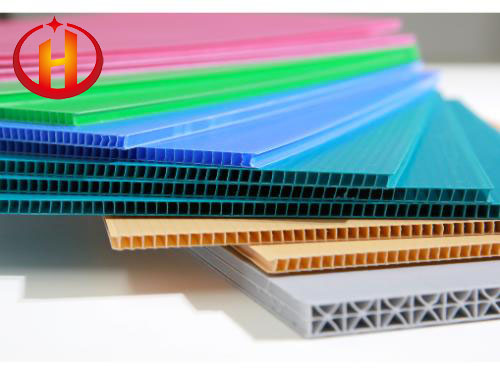PP Hollow board is a type of board with a hollow structure, which has excellent functions such as insulation, sound insulation, moisture-proof, and waterproofing. It is widely used in packaging, construction, and practical applications. The editor will provide a detailed introduction to the definition, classification, quality requirements, and practical application of hollow board, helping readers understand this important material. Hollow board is a type of board with a hollow center, also known as hollow sandwich board or multi-layer sandwich board. According to their different uses and materials, they can be divided into the following categories:
Classification according to use
(1) Packaging hollow board: It is mainly used for packaging and transportation of products. It has the advantages of lightness, pressure resistance, and earthquake resistance.
(2) Construction hollow panels: Mainly used in the construction field, used as wall panels, ceilings, etc., with thermal insulation, sound insulation, moisture-proof and other properties.
(3) Vehicle hollow panels: used in vehicle manufacturing as cabin floors, door panels, etc., with waterproof, rust-proof, fire-proof and other properties.
Classified according to material
(1) Wooden hollow board: It uses wooden board as the base material, and the sandwich material is wooden board or honeycomb paper. It has the advantages of light weight, easy processing and environmental protection.
(2) Plastic hollow board: It uses plastic as the base material, and the sandwich material is foam or honeycomb paper. It has the advantages of being waterproof, moisture-proof, and lightweight.
(3) Metal hollow board: It uses metal as the base material, and the sandwich material is foam or honeycomb paper. It has the advantages of pressure resistance, fire prevention, rust prevention, etc.

2. Quality requirements of hollow boards
The quality of the hollow board directly affects its use effect and service life. The following are the quality requirements:
Production process requirements: During the production process, it is necessary to ensure that the thickness of the hollow board is uniform and free of deformation, bubbles, etc. The adhesion of each layer of materials must be firm without delamination.
Raw material requirements: Use high-quality materials as base materials and sandwich materials. For example, wood boards should be made of tree species that are not easy to deform and not easy to rot. Foams should be made of high-density, stable materials.
Good material.
Physical performance requirements: The polyflute sheet should have a certain strength and stiffness and be able to withstand a certain amount of pressure and impact. At the same time, its thermal insulation, sound insulation, moisture-proof, waterproof and other properties should also meet relevant standards.
Durability requirements: The hollow board should have a long service life, be able to resist the erosion of the natural environment and chemical substances, and maintain the stability of its structure and performance.
By continuing to use the site you agree to our privacy policy Terms and Conditions.